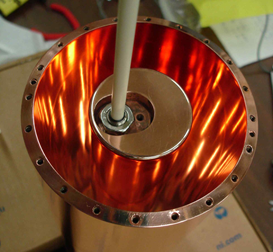The HAYSTAC Experiment

The Haloscope at Yale Sensitive To Axion CDM (HAYSTAC) is a tunable microwave cavity experiment searching for axion dark matter in the galactic halo. HAYSTAC is a high-frequency offshoot of the earlier ADMX experiment, formerly known as ADMX-HF, and has been able to probe mass ranges above 23 micro-eV in the cosmologically sensitive region of the axion parameter space.
HAYSTAC uses dilution refrigeration and cutting-edge parametric amplification techniques to maximize the signal-to-noise ratio and dramatically reduce scan times, advancing the search for axion dark matter to new regions of the parameter space. HAYSTAC also acts as a testbed for new technologies. The squeezed-state receiver used in Phase II of the HAYSTAC experiment is the first such receiver to be implemented in dark matter detector.
RAY
A Rydberg atom is an atom with a very high principal quantum number, meaning an excited valence electron likely exists far from its nucleus. The high energy level and large radius of Rydberg atoms gives them interesting and useful properties, and the Rydberg Atoms at Yale (RAY) phase of HAYSTAC will exploit these atoms’ sensitivities to detect single axion-converted microwave photons.
